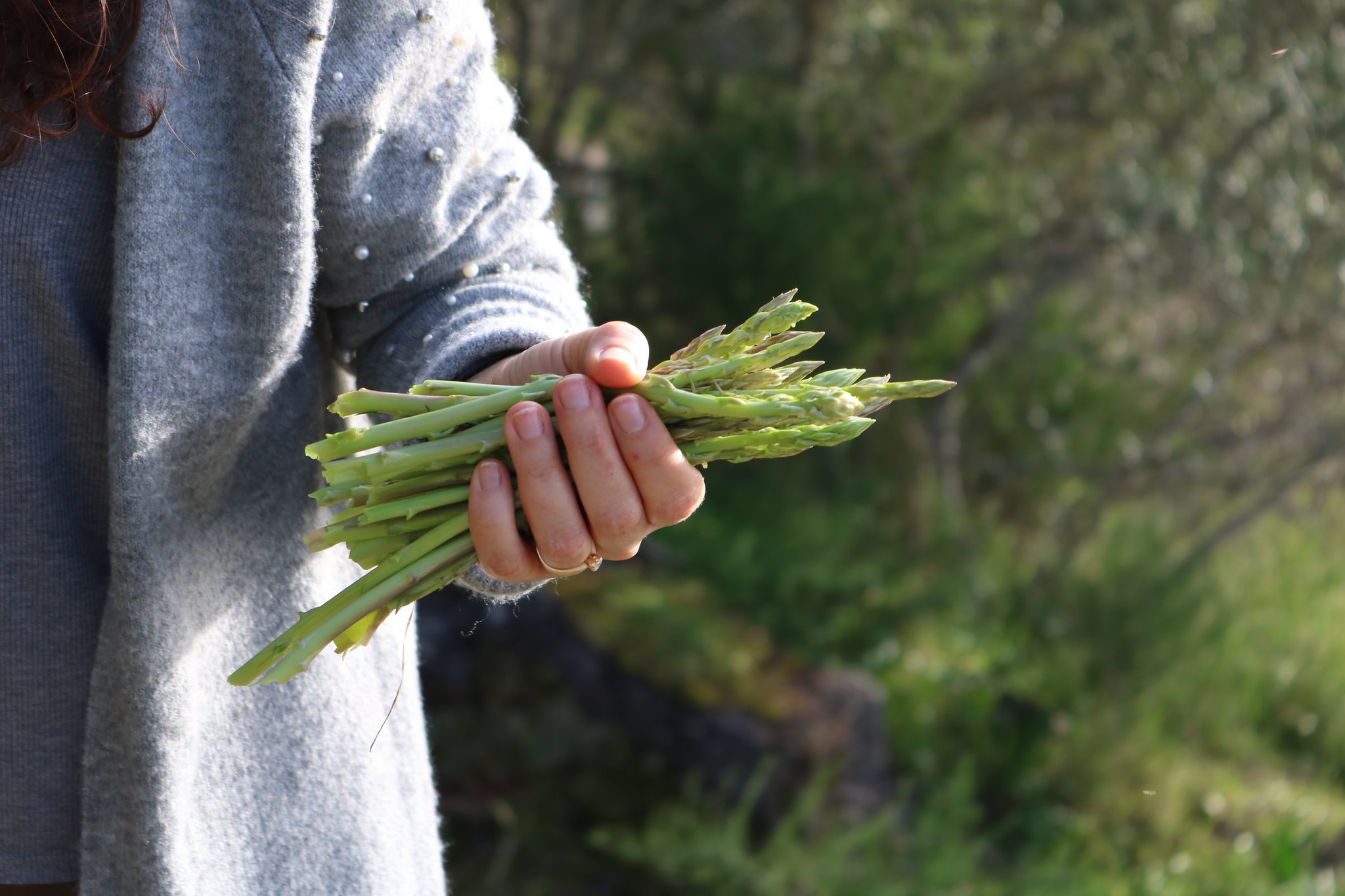Growing asparagus requires patience – from planting to harvest takes two to three years, but the wait is well worth the reward.
Homegrown asparagus is one of the earliest vegetables of spring. Its quality is much better than store-bought spears, and it’s less expensive. Once established, this vegetable easy to grow. And asparagus is beautiful. A member of the lily family, its fern-like foliage turns from green to gold in fall, and can be a backdrop to chrysanthemums or other late-season flowers.
Oregon State University Extension Service horticulturists say preparing an asparagus bed properly will reward you for decades.
Asparagus is a hardy perennial and should be planted as soon as the soil can be properly prepared in the spring. Usually asparagus is started from 1-year-old plants, rather than from seed. The plants you purchase in early spring are dormant crowns (no leaves) and look like an octopus, with long fleshy roots extending from the crown. Avoid buying crowns that are dried out or have rotten areas. If you can’t plant the crowns right away, keep them cool and moist until you are able to get them in the ground.
Choose a site for the asparagus in full sun. Foliage will reach a height of 5 to 6 feet during the summer so place your asparagus bed where it won’t shade out smaller plants. Good soil preparation is a key to success. It’s important to dig deeply to remove weeds and amend the soil with plenty of organic matter. Asparagus will not grow well in heavy, poorly drained soils and doesn’t compete well with weeds. Prepare the growing site to a depth of at least 12 inches and add a general slow-release fertilizer, Check the pH with a do-it-yourself test from a garden center or a laboratory, and add lime if you soil is acidic.
Plant your asparagus crowns into the prepared bed about three to four weeks before the last frost date. After amending the soil, dig a trench about 6 inches deep, place the crowns at the bottom of the trench about 12 inches apart. Place the bud pointing up, spread the roots and cover the crowns with 2 inches of the soil from the bed. As the spears lengthen through the spring, fill in the trench with soil, leaving the tips exposed. Keep the soil moisture consistent through the first year so the asparagus crowns can get established.
Starting from seed is less common but can be a less expensive way to make an asparagus bed. It will take an extra year (four rather than three) for seed-started asparagus to reach a harvestable stage. For information on growing seeds, we have a video, as well as an article. You can search the OSU Extension publications catalog or news feed for more resources.
Do not harvest the spears the first spring of planting. They should be left to form “ferns,” which provide food for the plant. The second spring after planting, a few shoots can be harvested, but only for a week or two. Leave the rest to feed developing roots. The third spring and thereafter, harvest spears until mid-June, then allow the fern to grow and keep the root crown healthy.
Asparagus should be fertilized in the spring as spears emerge and again right after the last harvest in June for older plantings.
To harvest, grasp 5- to 8-inch-long spears at the base and bend them toward the ground. The spear will snap where it is free of fiber. Spears may also be cut with a knife, but make sure not to damage the emerging spears. Quality deteriorates rapidly after harvest. If you can’t eat your asparagus immediately, refrigerate or process it.
Information on how to pickle asparagus is in the online OSU publication, PNW 355 “Pickling Vegetables.”
Asparagus varieties recommended for Oregon by OSU include: Mary Washington, Jersey Knight, Jersey Giant, UC 157, Purple Passion, Sweet Purple and Millennium.
—–
About OSU Extension: The Oregon State University Extension Service shares research-based knowledge with people and communities in Oregon’s 36 counties and the Confederated Tribes of Warm Springs. OSU Extension addresses issues that matter to urban and rural Oregonians. OSU Extension’s partnerships and programs contribute to a healthy, prosperous and sustainable future for Oregon.

